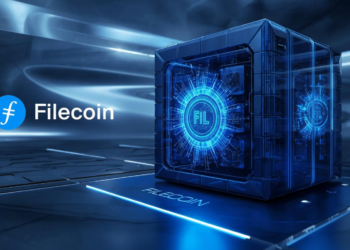Introduction
The internet has come a long way. We started with Web2, where companies control our data. Now, Web3 is changing that. It’s about giving us full control of our online lives. We can own our digital assets like cryptocurrencies and NFTs. But how do we manage these assets securely? That’s where Web3 wallets come in. These wallets act as keys to access decentralized apps, tokens, and more. Understanding what Web3 wallets are is vital to staying safe and making the most of this new online world. Let’s explore how these wallets work, the types available, and why they matter.
What Are Web3 Wallets? Understanding the Basics
Web3 wallets are digital tools that store private keys. These keys are like passwords that give access to your cryptocurrencies and other digital assets. Unlike regular wallets or bank accounts, Web3 wallets don’t store money directly. Instead, they hold the keys needed to access your assets on the blockchain. When you connect a Web3 wallet to a decentralized app or platform, you can send, receive, and manage your assets easily. The key idea is user sovereignty—meaning you control your assets and data without needing a third party.
Key Features of Web3 Wallets
- Secure private key management: Your private keys are protected with encryption.
- Multiple blockchain support: Some wallets work across Ethereum, Solana, and more.
- Easy dApp integration: You can connect to decentralized apps smoothly.
- NFT and token support: Manage various tokens and digital collectibles.
- Decentralized identity: Some wallets support digital IDs and personalized profiles.
Types of Web3 Wallets
Web3 wallets come in different forms. Each has its own strengths and best use cases. Let’s look at the most common types.
Hot Wallets
Hot wallets are connected to the internet all the time. They are quick to use and perfect for small amounts or frequent transactions. Examples include MetaMask, Trust Wallet, and Phantom. They let you access decentralized finance (DeFi) platforms or buy NFTs with ease. But, since they are always online, they face higher hacking risks. A quick phishing scam can compromise your funds.
Cold Wallets
Cold wallets are offline wallets designed for security. Hardware devices like Ledger or Trezor are popular options. They store private keys on physical devices, making them nearly impossible for hackers to access remotely. Cold wallets are ideal for storing large amounts of crypto and long-term holdings. The downside? They get less portable and require some setup steps each time you want to use them.
Custodial vs Non-Custodial Wallets
Custodial wallets are managed by third parties. Think of them as a bank that holds your assets for you. They are easy to use but mean you give up some control. Non-custodial wallets keep full ownership in your hands. You are responsible for your keys. This offers more control but also more responsibility. Losing your seed phrase means losing access forever.
Key Features and Technology Behind Web3 Wallets
Web3 wallets pack a lot of tech. Security is top priority, with encryption and seed phrases. Multi-chain support makes it easy to switch between platforms. Many wallets connect directly with decentralized apps for smooth transactions. Backup options, like seed phrases, help recover assets if you lose your device. User authentication may include biometric scans or PINs for extra safety.
How to Choose the Right Web3 Wallet
Picking a wallet depends on your needs. Here’s what to think about:
- How secure is the wallet? Does it offer good protection?
- Does it support your favorite blockchain or tokens?
- Is the interface simple enough for your comfort?
- Can you back up and recover your assets easily?
- Is there a strong community or ongoing development?
Tips to get started:
- Read reviews and check for security audits.
- Start small—test your wallet with a small amount first.
- Use a mix of wallets for different purposes to keep assets safe.
Real-World Examples and Use Cases
MetaMask is a top choice for DeFi users and NFT collectors. It connects directly with many decentralized platforms. Trezor and Ledger are hardware wallets loved for high-security needs, especially for serious traders holding large assets. Phantom wallet is popular among Solana fans, making transactions simple. These wallets make managing various assets straightforward and trustworthy.
Future Trends and Developments in Web3 Wallets
The future of Web3 wallets looks exciting. Expect more biometric security, like fingerprint or face recognition. Interoperability between different blockchains will improve, making it easier to move assets. Privacy features will get better, protecting user data. Social recovery wallets may become common—where friends or family help recover your wallet if needed. Industry leaders predict innovations that will make Web3 wallets more secure, accessible, and user-friendly.
Conclusion
Web3 wallets are the backbone of the decentralized internet. They give you true ownership of your digital assets, whether cryptocurrencies or NFTs. Choosing the right wallet depends on your security needs and how you plan to use it. As technology advances, these wallets will become even more powerful and easier to use, empowering you to control your digital life securely.
Key Takeaways
- Web3 wallets are essential tools to work with decentralized apps and manage your digital assets.
- Different wallet types suit different needs based on security and convenience.
- Staying informed about new features and updates helps you choose smartly and stay safe in the Web3 space.
Join Us : Twitter | Website | GitHub | Telegram | Facebook | YouTube

























